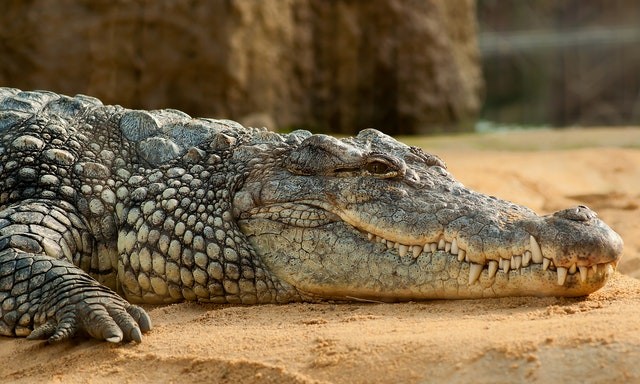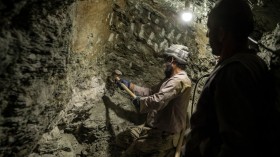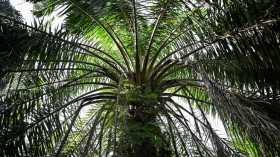The 'uncle' of all modern crocodiles was a scary 14-feet-long creature that roamed the Serengeti-like landscape of Wyoming about 155 million years ago.
A research team led from Hokkaido University who have discovered a new species of croc-like 'goniopholidid' made this conclusion.

The Discovery of Amphicotyleus milesi
The 'Amphicotyleus milesi' fossil was discovered in Wyoming's Albany County's East Camarasaurus Quarry, which was named after the dinosaurs finds from the location, according to Daily Mail.
According to the palaeontologists, A. milesi weighed about half a ton and had a mouth filled with 30 razor-sharp teeth measuring two inches long.
A. milesi was not just the 'uncle' of modern crocodiles, according to research author and palaeontologist Junki Yoshida of Japan's Hokkaido University, but it also showed the genesis of their distinctive diving respiratory equipment.
Yoshida argues that like contemporary crocodilians, Amphicotylus milesi possesses a back extension of the nasal duct and a small, curved tongue bone.
This shows that the crocodilian ancestors could lift the valve at the tongue by maintaining their external nostrils above the water level. Like modern crocodilians, they could breathe underwater while clutching prey in their jaws.
Also Read: Snappy Evolution: The Secret Behind Ancient Crocodiles' Successful Adaptation
Adaptation of Modern Crocodiles
According to experts, the discovery of Amphicotylus gives a fresh perspective into the aquatic adaptation toward modern crocodylians.
Submerged, modern crocodiles can hold their breath for up to an hour. While only 25 crocodile species remain now, there were hundreds during the dinosaur era, with some surpassing 30 feet in length and weighing six times that of A. milesi.
What are now the badlands of Wyoming would have been more like the Serengeti of Africa at the period A. milesi existed, during the Late Jurassic.
Long periods of severe drought would have forced local creatures to adapt, followed by months of monsoon that would have filled local waterways.
A. milesi, according to the researchers, would have been an opportunistic predator, consuming anything from tiny fish to frogs, lizards, and turtles, as well as herbivorous dinosaurs and pterosaurs.

Evolution of Modern Crocodiles
Crocodiles seem to come from another era, when reptiles reigned. However, looks may be misleading. Crocodiles today are not holdovers from the Jurassic period, but rather one manifestation of a large and diverse family that has existed for over 235 million years.
Furthermore, crocodiles are continually evolving-and at a quicker rate than at earlier points in their scaly family's history.
A new research published in Proceedings of the Royal Society B by University College London anatomist Ryan Felice and colleagues comes to the apparently conflicting result concerning crocodylian evolution.
The researchers discovered that, while seeming to be semi-aquatic antiques, modern crocodile species in Southeast Asia, Australia, and the Indo-Pacific are changing swiftly by comparing three-dimensional models to trace anatomical landmarks on crocodylian heads across time.
Crocodiles have evolved the same head forms over and over again, which is why modern crocodile species seem so similar.
Related Article: Northern Territory's Crocodile Population Suddenly Increases After Pushed to the Verge of Extinction
For more news, updates about crocodiles and similar topics don't forget to follow Nature World News!
© 2024 NatureWorldNews.com All rights reserved. Do not reproduce without permission.





